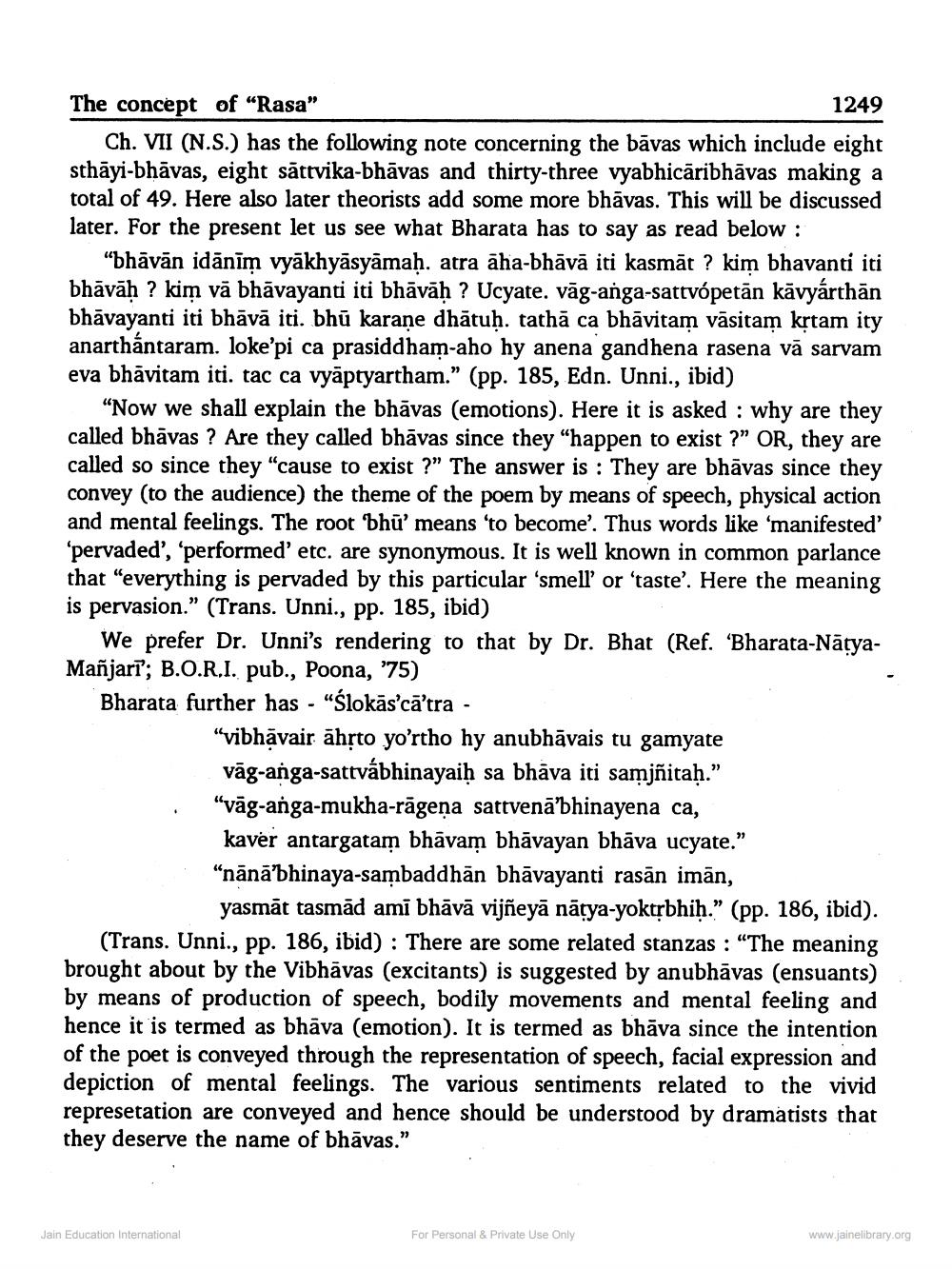________________
The concept of “Rasa”
1249 Ch. VII (N.S.) has the following note concerning the bāvas which include eight sthāyi-bhāvas, eight sātrvika-bhāvas and thirty-three vyabhicāribhāvas making a total of 49. Here also later theorists add some more bhāvas. This will be discussed later. For the present let us see what Bharata has to say as read below :
"bhāvān idānīm vyākhyāsyāmah. atra aha-bhāvā iti kasmāt? kim bhavanti iti bhāvāḥ ? kim vă bhāvayanti iti bhāvāḥ ? Ucyate. vāg-anga-sattvópetān kävyárthān bhāvayanti iti bhāvā iti. bhū karane dhātuḥ. tathā ca bhāvitam vāsitam krtam ity anarthāntaram. loke'pi ca prasiddham-aho hy anena gandhena rasena vā sarvam eva bhävitam iti. tac ca vyāptyartham.” (pp. 185, Edn. Unni., ibid)
“Now we shall explain the bhāvas (emotions). Here it is asked : why are they called bhāvas ? Are they called bhāvas since they "happen to exist ?" OR, they are called so since they “cause to exist ?" The answer is : They are bhāvas since they convey (to the audience) the theme of the poem by means of speech, physical action and mental feelings. The root bhữ' means 'to become'. Thus words like 'manifested' 'pervaded', 'performed' etc. are synonymous. It is well known in common parlance that "everything is pervaded by this particular 'smell' or 'taste'. Here the meaning is pervasion.” (Trans. Unni., pp. 185, ibid)
We prefer Dr. Unni's rendering to that by Dr. Bhat (Ref. 'Bharata-NātyaMañjari; B.O.R.I. pub., Poona, '75) Bharata further has - "ślokās'cā’tra -
"vibhāvair āhịto yo’rtho hy anubhāvais tu gamyate
vāg-anga-sattvábhinayaiḥ sa bhāva iti samjñitaḥ.” "vāg-anga-mukha-rāgeṇa sattvenā”bhinayena ca,
kaver antargatam bhāvam bhāvayan bhāva ucyate.” “nānā’bhinaya-sambaddhān bhāvayanti rasān imān,
yasmāt tasmād ami bhāvā vijñeyā nātya-yoktřbhiḥ.” (pp. 186, ibid). (Trans. Unni., pp. 186, ibid) : There are some related stanzas : "The meaning brought about by the Vibhāvas (excitants) is suggested by anubhāvas (ensuants) by means of production of speech, bodily movements and mental feeling and hence it is termed as bhāva (emotion). It is termed as bhāva since the intentior of the poet is conveyed through the representation of speech, facial expression and depiction of mental feelings. The various sentiments related to the vivid represetation are conveyed and hence should be understood by dramatists that they deserve the name of bhāvas.”
Jain Education International
For Personal & Private Use Only
www.jainelibrary.org




